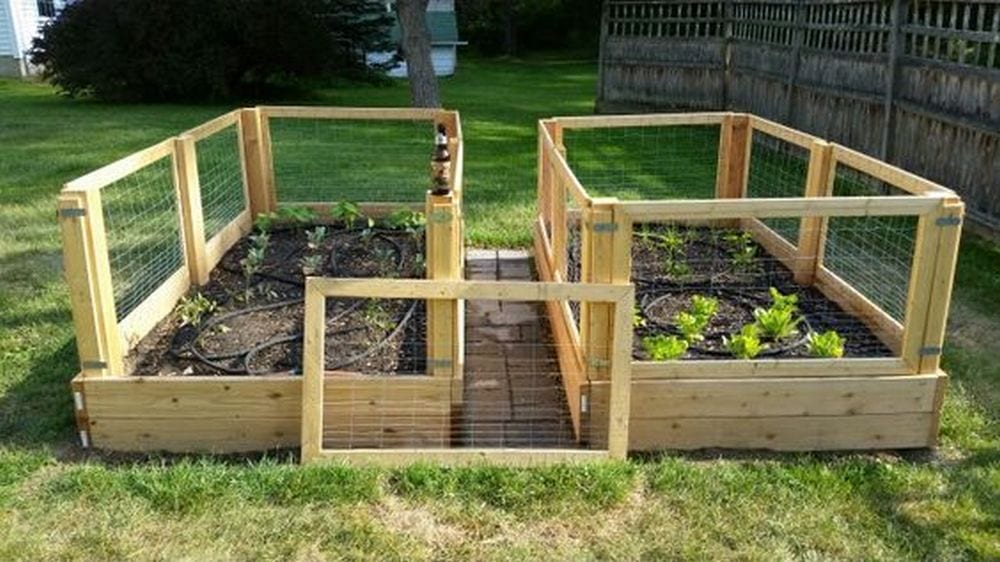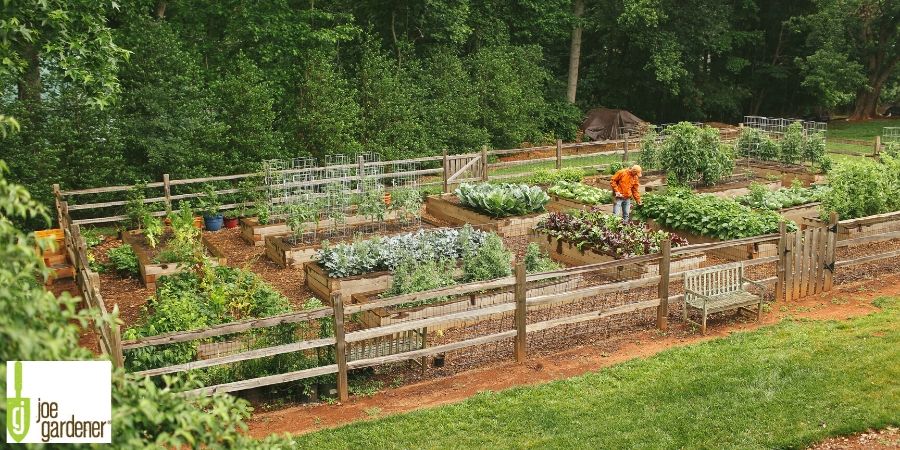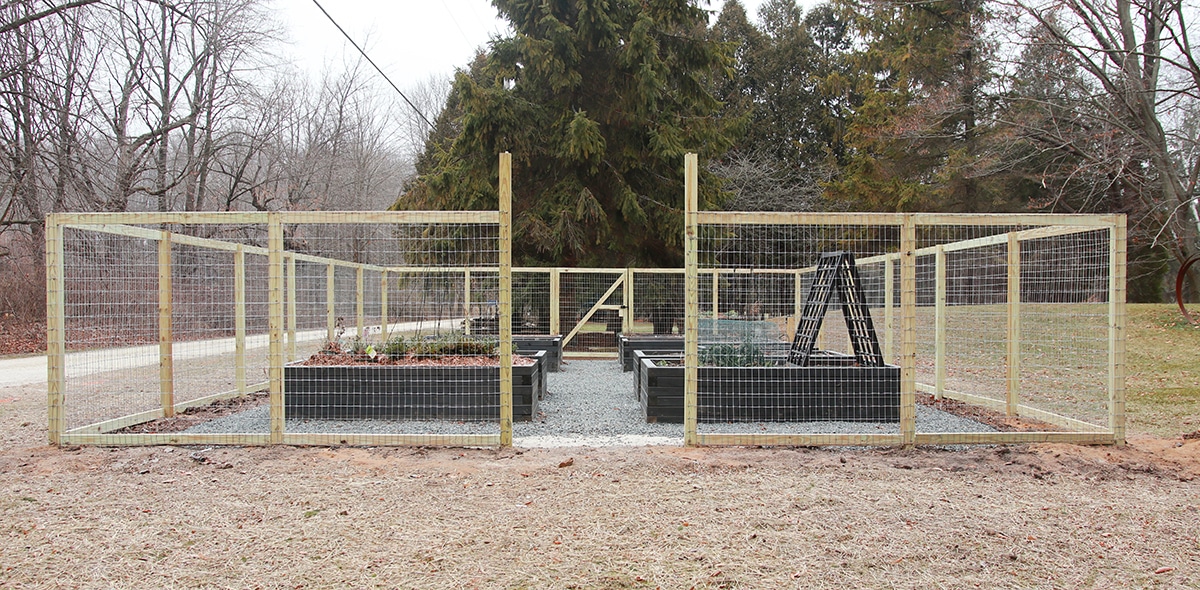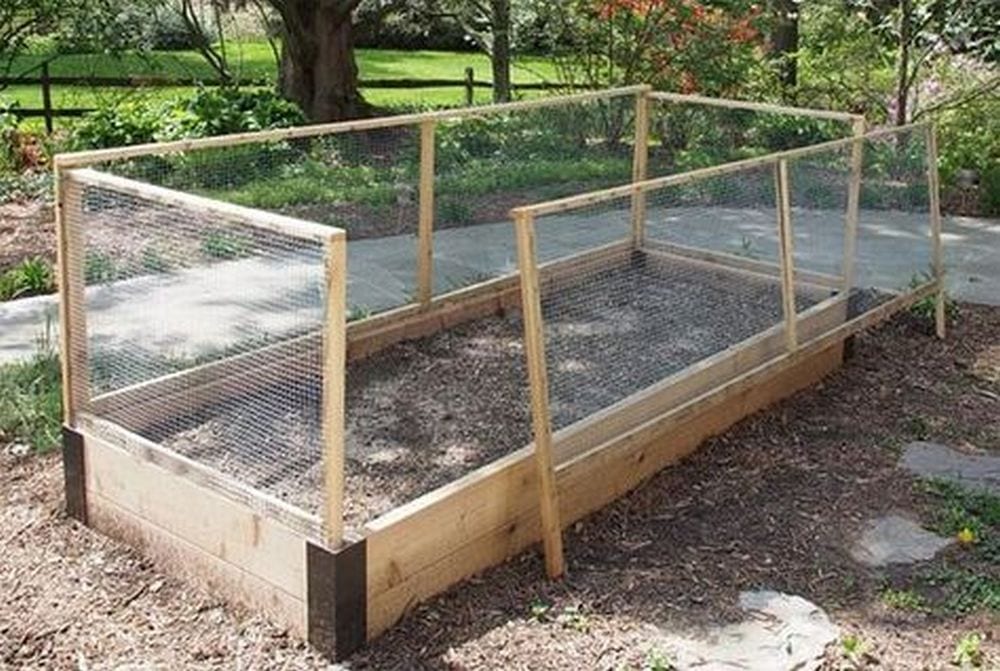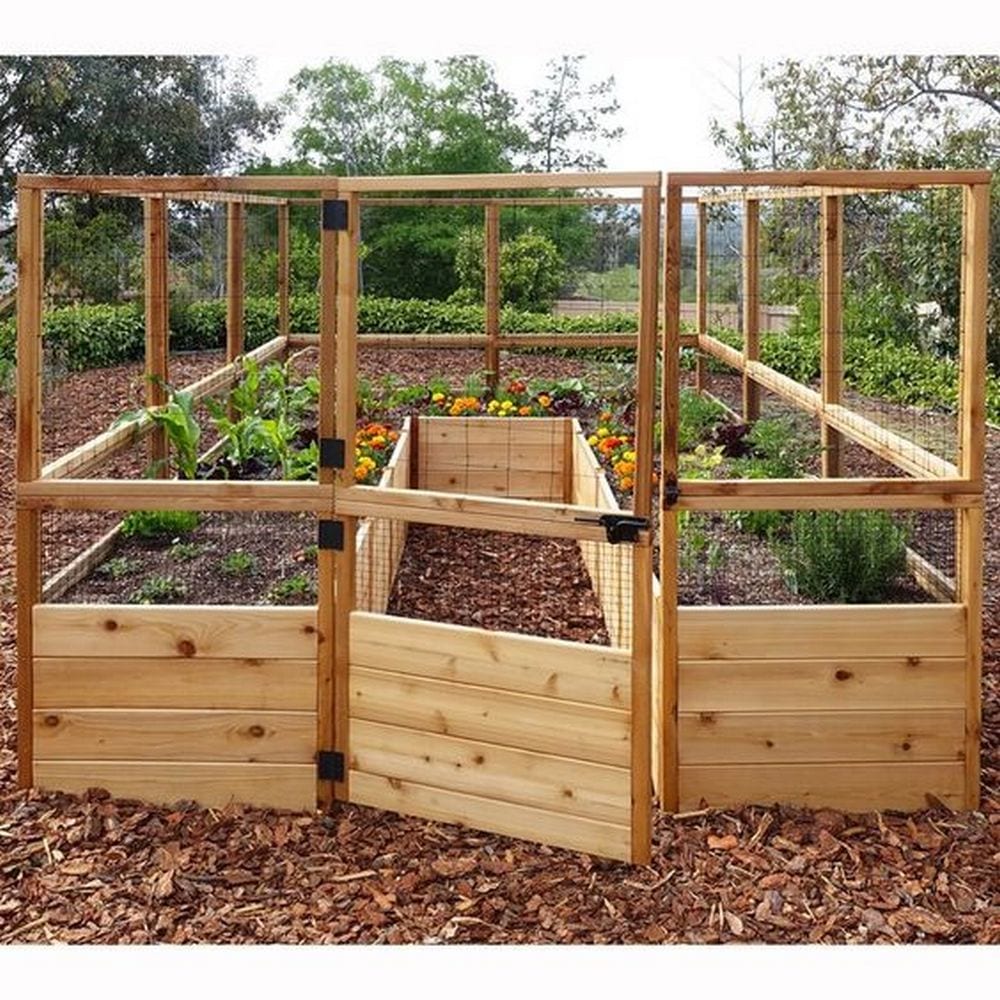The Benefits of Fenced Raised Bed Gardens
When it comes to gardening, fenced in raised bed gardens have proven to be a highly effective and popular choice. By incorporating a fence into a raised bed design, gardeners can reap a multitude of benefits that lead to a more successful and sustainable gardening experience. One of the primary advantages of fenced raised bed gardens is improved soil quality. The fence acts as a barrier, preventing soil erosion and retaining valuable nutrients within the bed. This, in turn, leads to better drainage, as the soil is able to absorb and filter water more efficiently. As a result, crops thrive in these conditions, leading to increased yields and a more bountiful harvest. Furthermore, fenced in raised bed gardens provide a sense of organization and structure, making it easier to maintain and care for the garden. With a clear boundary defined, gardeners can better plan and manage their space, ensuring that each plant receives the necessary attention and resources. By incorporating a fence into a raised bed design, gardeners can unlock the full potential of their garden, leading to a more rewarding and productive experience.
How to Choose the Right Fencing Material for Your Raised Bed
When it comes to building a fenced in raised bed garden, selecting the right fencing material is crucial. The ideal material should be durable, cost-effective, and aesthetically pleasing. Wooden fencing is a popular choice for raised beds, offering a natural and rustic look. However, it may require regular maintenance to prevent rot and decay. Metal fencing, on the other hand, is a more durable option that can withstand harsh weather conditions. It’s also a great choice for gardeners who want to add a modern touch to their garden. Recycled plastic fencing is another eco-friendly option that’s gaining popularity. It’s low maintenance, durable, and can be made to mimic the look of wood. Ultimately, the choice of fencing material will depend on the gardener’s personal preferences, budget, and garden style. By considering these factors, gardeners can choose a fencing material that complements their fenced in raised bed garden and enhances their overall gardening experience.
Designing a Fenced Raised Bed Garden for Maximum Space Efficiency
When designing a fenced in raised bed garden, it’s essential to consider the available space and how to maximize its potential. A well-designed garden can make a significant difference in the overall productivity and aesthetic appeal of the space. To begin, gardeners should assess the size and shape of their yard, balcony, or patio, taking note of any obstacles or limitations. Next, they should determine the ideal bed size and shape, considering factors such as accessibility, sunlight, and wind direction. A rectangular bed with a narrow width is often the most space-efficient, allowing for easy access and maintenance. Additionally, incorporating a trellis or vertical gardening elements can help make the most of limited space. By carefully planning and designing a fenced raised bed garden, gardeners can create a thriving and productive oasis, even in the smallest of spaces. With a little creativity and planning, a fenced in raised bed garden can become a haven for relaxation and a hub for fresh produce.
The Role of Fencing in Pest Control and Wildlife Management
Fenced in raised bed gardens offer a unique advantage when it comes to pest control and wildlife management. By incorporating a fence into the design, gardeners can effectively keep out unwanted visitors, such as rabbits, deer, and other small animals, that can damage crops and compromise the integrity of the garden. A sturdy fence can also prevent pests like slugs, snails, and caterpillars from accessing the plants. Furthermore, fencing can help to deter larger wildlife, like raccoons and opossums, that may be attracted to the garden’s bounty. In addition to physical barriers, gardeners can also use fencing to support netting or bird-repellent balloons, providing an added layer of protection for their crops. By incorporating fencing into their garden design, gardeners can enjoy a more bountiful and stress-free harvest, free from the threats of pests and wildlife. With a fenced in raised bed garden, gardeners can focus on nurturing their plants, rather than constantly battling unwanted visitors.
Fenced Raised Bed Gardens for Small Spaces: Making the Most of Limited Room
Even with limited space, gardeners can still enjoy the benefits of a fenced in raised bed garden. By adapting the design to fit small backyards, balconies, or patios, gardeners can create a thriving oasis in even the most compact areas. One key strategy is to opt for narrow, rectangular beds that can be tucked into tight spaces. Additionally, incorporating vertical elements, such as trellises or wall-mounted planters, can help maximize space and add visual interest. For balconies or patios, consider using self-watering planters or compact, space-saving designs that can be easily moved or rearranged. With a little creativity and planning, gardeners can transform even the smallest of spaces into a productive and beautiful fenced raised bed garden. By doing so, they can enjoy the many benefits of fenced in raised bed gardens, including improved soil quality, better drainage, and increased crop yields, even in the most limited of spaces.
DIY Fenced Raised Bed Garden Projects to Get You Started
For gardeners looking to create their own fenced in raised bed garden, DIY projects offer a cost-effective and rewarding way to get started. With a few simple tools and materials, gardeners can build a beautiful and functional fenced raised bed garden that meets their specific needs and preferences. One popular DIY option is to use wooden frames, which can be stained or painted to match the surrounding landscape. Metal fencing is another popular choice, offering a sleek and modern aesthetic. For a more rustic look, consider using recycled plastic or repurposed materials like old pallets or fencing. To get started, gardeners can find a wealth of online tutorials and plans, ranging from simple and straightforward designs to more complex and intricate projects. By choosing a DIY approach, gardeners can save money, exercise their creativity, and enjoy the satisfaction of building their own fenced in raised bed garden from scratch.
Fenced Raised Bed Gardens for Accessibility and Mobility
Fenced in raised bed gardens can be a game-changer for gardeners with mobility issues, offering a more accessible and enjoyable gardening experience. By incorporating features like waist-high beds, wide pathways, and easy-to-reach planters, gardeners can reduce strain and improve their overall mobility. Fenced raised bed gardens can also be designed with accessibility in mind, featuring gentle slopes, ramps, or even wheelchair-accessible beds. Additionally, the enclosed nature of these gardens can help reduce the physical demands of gardening, allowing gardeners to focus on the therapeutic benefits of nurturing plants. With a little creativity and planning, fenced in raised bed gardens can be adapted to meet the unique needs of gardeners with mobility issues, providing a sense of independence and freedom in the garden.
Maintenance and Upkeep for Fenced Raised Bed Gardens
To ensure the long-term success and sustainability of fenced in raised bed gardens, regular maintenance and upkeep are essential. One of the most critical tasks is soil maintenance, which involves adding organic matter, fertilizers, and other amendments to maintain soil health and fertility. Watering is another crucial aspect, as fenced raised bed gardens require consistent moisture levels to support healthy plant growth. Gardeners should also prepare their gardens for seasonal changes, such as winterizing the soil, pruning plants, and protecting the fencing from harsh weather conditions. Additionally, regular inspections of the fencing and surrounding areas can help identify potential issues, such as pest infestations or damage to the fencing material. By staying on top of maintenance and upkeep, gardeners can enjoy a thriving and productive fenced in raised bed garden for years to come.


